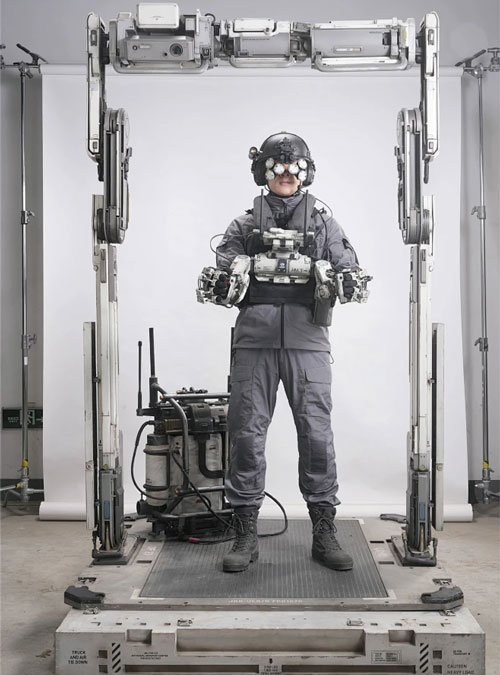RF Microwave PCB Application and Introduction
RF (radio frequency) and microwave PCBs are circuit boards in the electronics industry designed for high-frequency signal transmission and have a wide range of applications. Due to their ability to support high-frequency operation from 100 MHz to tens of GHz, this type of PCB has become a core component of modern communications, sensing, medical and defense technologies.
All high frequency PCBs that operate above 100 MHz are generally called RF PCBs, while when operating frequencies go up to 2 GHz or above, such boards are called microwave RF PCBs.
The RF PCB development process is significantly different compared to traditional PCB design. Since electromagnetic properties are extremely sensitive to performance in the RF and microwave bands, many design parameters become critical in the development of RF PCBs that can often be ignored or have little impact in ordinary PCB designs.
The design and manufacturing of RF and microwave PCBs require more precise calculations and optimizations, involving circuit characteristics such as impedance matching, signal integrity, electromagnetic compatibility and other aspects.
In addition, the performance of this type of PCB is highly dependent on the dielectric constant (Dk), dissipation factor (Df), and coefficient of thermal expansion (CTE) of the selected material. Therefore, the development process of RF PCB usually needs to be carried out in a controlled environment with professional knowledge and advanced equipment to ensure the reliability of the design and the stability of the performance.
Compared with ordinary PCBs, the design of RF PCBs requires not only attention to conventional electrical and mechanical properties, but also special attention to issues such as transmission quality, signal loss and radiation interference of high-frequency signals.
To meet these requirements, RF PCB developers require in-depth theoretical knowledge and practical experience, as well as sophisticated simulation tools and test equipment to ensure maximum optimization of product performance during the design phase. This complexity makes the design of RF microwave PCBs a sophisticated area of the PCB industry.
RF Microwave PCB Applications

RF microwave PCBs are widely used in a variety of wireless technology-based products, including robots, smartphones, security applications, and sensors. If you are developing such a product, choosing a perfect RF microwave PCB is essential to ensure the performance, stability, and life of the product. The characteristics of the RF microwave PCB directly affect the signal transmission quality, anti-interference ability, and overall functional performance, so its selection needs to be carefully considered.
With the continuous advancement of technology, new designs and products are flooding the market every day. These technological breakthroughs have not only promoted the upgrading of electronic products, but also put forward higher requirements for PCB technology. For product developers, how to choose a PCB with good adaptability and excellent performance for their equipment is a key step to enhance product competitiveness. A suitable RF microwave PCB can ensure that the equipment operates efficiently and stably in a high-frequency environment and prolongs its service life, which is crucial for any development project.
However, finding the perfect RF microwave PCB is often not an easy task, especially when choosing the PCB material that suits the project needs. This process can be very stressful because the performance of the PCB depends not only on the circuit design, but also on the material properties. Product developers need to consider a variety of factors, including the electrical properties, thermal stability, mechanical strength, and manufacturing process compatibility of the material. Selecting high-quality materials with appropriate functions and ensuring on-time delivery are often important links that determine the success or failure of a project.
When selecting RF microwave PCB materials, developers need to focus on multiple core parameters, such as operating frequency, microwave energy level, operating temperature range, current and voltage requirements, etc. These factors will directly affect the impedance matching, signal integrity, thermal management capabilities, and durability of the PCB. For example, for high-frequency applications, the dielectric constant (Dk) and dissipation factor (Df) of the material need to be within a specific range to ensure the stability and low loss of signal transmission. In addition, the coefficient of thermal expansion (CTE) of the material must also match that of the copper foil to avoid material delamination or deformation in high-temperature working environments.
In actual projects, developers also need to consider the processability and cost-effectiveness of the material. Although high-performance RF microwave PCB materials are more expensive, they can significantly improve the performance and reliability of the product, thereby gaining an advantage in a highly competitive market. Therefore, finding a reliable PCB manufacturer and working closely with it to develop the best material and process solutions is an important guarantee for project success.
In short, whether it is a robot, smartphone or security device, the choice of RF microwave PCB is crucial to the success of the product. Developers need to combine product requirements and actual application scenarios, and comprehensively weigh material performance and manufacturing costs to find a PCB solution that is truly suitable for the project.
1. Wireless Communication
Wireless communication is one of the largest application areas of RF microwave PCBs, which supports various forms of wireless connections in modern society:
Mobile communication devices: including smartphones, base stations, and wireless hotspots. RF microwave PCBs are an important support for 4G and 5G networks, helping to achieve high-speed data transmission and reliable signal coverage.
Wireless LAN (Wi-Fi): In routers, access points, and Internet of Things (IoT) devices, RF microwave PCBs are used to optimize signal quality and ensure stable connections.
Satellite communication: Applied to ground stations and satellite equipment, supporting long-distance data transmission and navigation systems such as GPS and GNSS.
2. Military and Defense
In the military and defense field, RF microwave PCBs have become core components of key systems due to their high reliability and high-frequency performance:
Radar systems: used to track targets, monitor the environment, and navigate. RF microwave PCBs are required in radar systems to process high-speed signals and ensure accurate data transmission.
Communication equipment: Military communication systems (such as tactical radios) rely on RF PCBs to provide low-latency and high-security signal transmission.
Electronic Countermeasures (EW) Systems: RF microwave PCBs are used in jammers and signal interception equipment to help gain an advantage in complex electronic warfare environments.
3. Aerospace
RF microwave PCBs are an important component of aerospace technology, supporting a variety of applications from flight control to communication and navigation:
Aerospace communications: Air-to-ground and air-to-air communications on aircraft.
Satellite systems: Subsystems for high-frequency signal processing, such as transmitter modules and receiver modules.
Navigation systems: Support global navigation satellite systems (GNSS) and autopilot equipment.

4. Medical equipment
Modern medical equipment increasingly relies on high-frequency technology to achieve accurate diagnosis and treatment, and RF microwave PCBs play a key role in the following devices:
Imaging equipment: Such as MRI (magnetic resonance imaging) and ultrasound equipment, which require high-speed signal transmission and precise data processing.
Wireless medical sensors: Applied for remote monitoring and real-time health data transmission.
Therapeutic equipment: Such as radiofrequency ablation equipment and laser therapy devices, which use high-frequency energy to achieve therapeutic effects.
5. Automotive electronics
With the development of automotive technology, RF microwave PCBs are increasingly used in the automotive field:
Autonomous driving systems: used to support radar and laser radar (LiDAR) systems to achieve environmental perception and navigation.
In-vehicle communications: such as V2X (vehicle-to-everything) technology, which supports real-time information exchange between vehicles and other devices.
Entertainment and navigation systems: In-vehicle GPS and wireless communication modules use RF PCBs to process high-frequency signals.
6. Industrial Internet of Things (IIoT)
In the field of industrial Internet of Things, RF microwave PCBs are an important part of connection and automation systems:
Wireless sensor networks: help achieve real-time monitoring and data collection of factory equipment.
Remote control devices: used for remote operating systems in industrial automation.
Industrial communications: such as LoRa and Zigbee modules for long-distance, low-power data transmission.
7. Consumer electronics
Many consumer electronics products used in daily life also rely on RF microwave PCBs to provide wireless connectivity and high-frequency functions:
Smart home devices: such as smart speakers, smart door locks, and home security devices.
Wearable devices: including smart watches and health trackers, which use RF PCBs to achieve wireless communication with mobile phones and the cloud.
Gaming devices: RF microwave PCBs are widely used in wireless controllers and virtual reality (VR) headsets.
8. Energy and Environment
RF microwave PCBs also play an important role in energy management and environmental monitoring:
Smart grid: modules for wireless data acquisition and transmission, supporting energy distribution and optimization.
Weather stations and environmental sensors: send data to remote servers through wireless communication modules for real-time analysis.

Summary
RF microwave PCB applications cover a wide range of fields from daily consumer products to high-tech military equipment. With the further development of wireless technology and the continuous expansion of high-frequency applications, the importance of RF microwave PCBs will become increasingly apparent. Its high-frequency transmission capability, stable performance, and adaptability to complex environments make it one of the indispensable core technologies for modern electronic devices.





